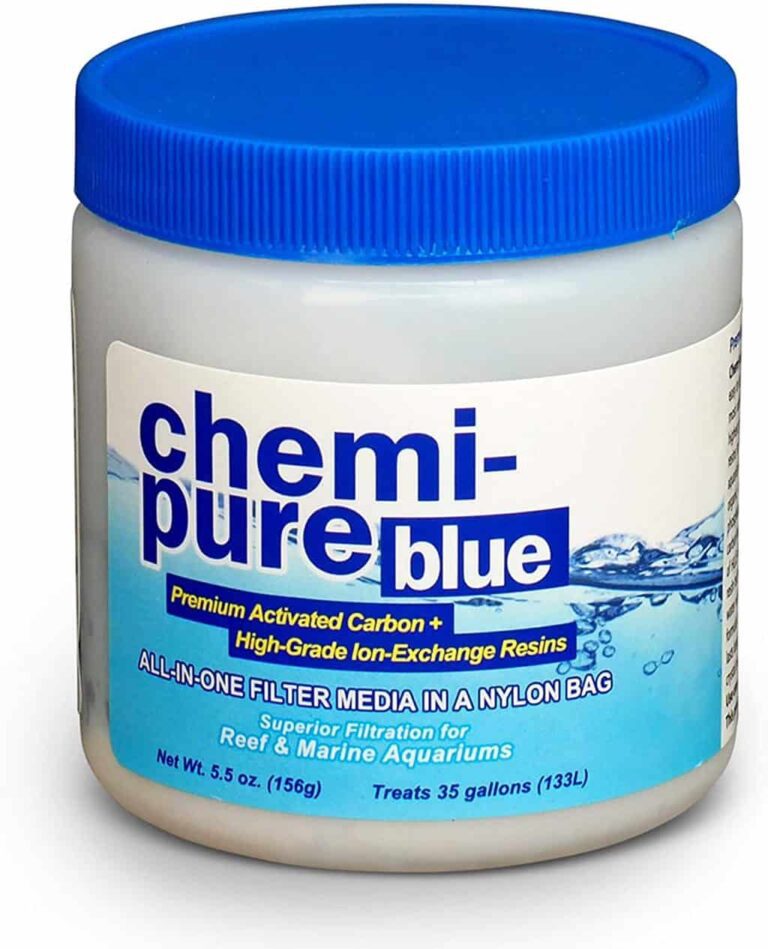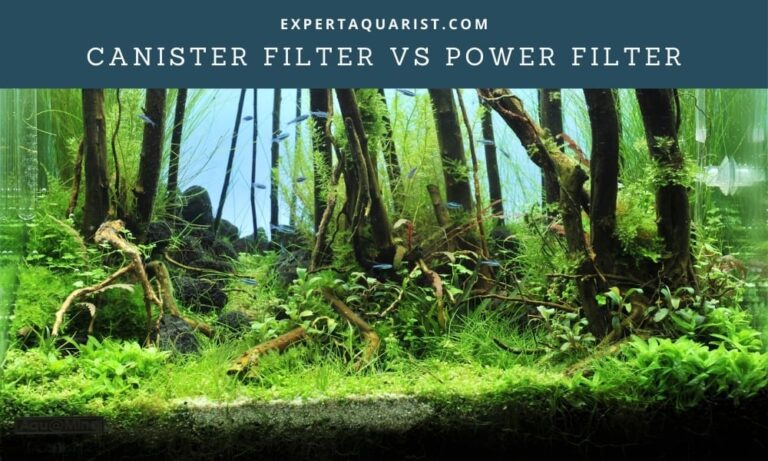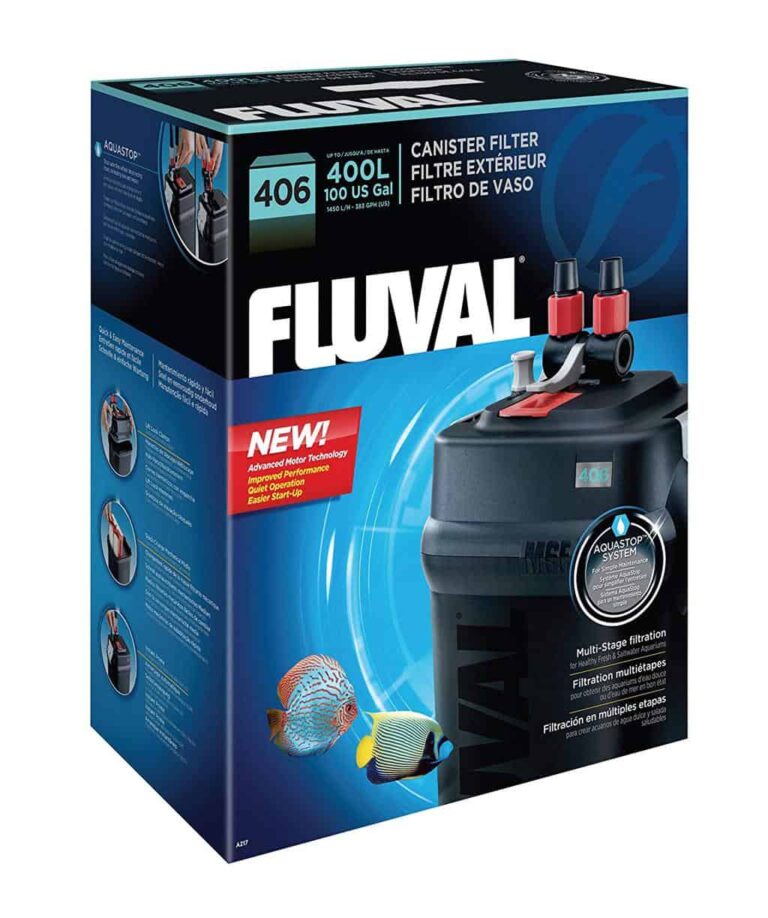Many new fish owners ask, “What size sponge filter do I need?” It is crucial because choosing the right sized sponge filter will boost the bacterial colony’s growth for the biological filtration to begin inside the tank.
As we know, a filtration system requires filtering 6X water than the original volume of the tank in each hour. So in a 100-liter tank, we use a 600 liter per hour capacity power filter or HoB or a top filter. But how do I find out this filtration rate when using a sponge filter?
In the case of sponge filters, the filtration rate will depend on your air pump. Usually, a single outlet air pump’s capacity is 2 liters per minute, i.e., 120 liters per hour. The sponge filter’s ability needs to be double of the air pump for the outlet, and it is 4 liters per minute, i.e., 240 liters per hour. And this will be your filtration rate with a sponge filter. Also, note that the sponge filter’s size will only determine the smaller or larger space for the bacterial colony to grow.
So, now let’s focus on what size do sponge filter do you need. Also, we will provide a full sponge filter selection guide with the size. So, don’t miss the lifetime chance if you want your favorite fish to grow and thrive in the aquarium.
What Is A Sponge Filter?
The name of the sponge filter indicates its construction and how it works in reality. It is a piece of the sponge through which the aquarium water passes. Initially, the sponge only offers mechanical filtration by removing the harmful particles to some extent from the aquarium water.
However, once the bacterial colony starts growing inside and around the sponge filter, it can perform the biological filtration also.
You will find the sponges in various sizes and shapes. Nonetheless, the most important thing is the pore size of the sponges. The pore size and the sponge size and shape enable it to be adept with different sorts of filtration systems and requirements.
You can use an air pump, powerhead, air compressor, or even another filter to power the sponge filter for proper functioning. In fact, the sponge filter’s effectiveness depends on the size of the air pump or compressor largely.

The Size of Sponge Filter You need
You must note that sponge filters should only be used when very mild filtration is required, such as fry tanks, beta tanks, shrimp tanks, hospital tanks, etc. In this case, 3-4 times per hour filtration of the aquarium water’s actual volume is usually sufficient.
With a single outlet air pump, we can use a sponge filter of any size up to a 20 liter (~ 5 gallons) tank. And if you use a double outlet air pump, you can use up to 40 liters (~ 10 gallons) tank. If you want to use a sponge filter in a 20-gallon community tank, you need to use two sponge filters, each with a double outlet air pump.
If you want to use sponge filter in tanks where the bioload is high, such as small community tanks, your filtration should be calculated 6 times per hour.
So, here’s is the summary for the size-
| Tank Size | Filtration required | Sponge Filter Capacity | Air Pump |
| 10 Gallon (40 Liter) | Modest | 3X to 4X per hour | Single |
| 20 Gallon (80 Liter) | High | 4X per hour | Dual |
| Large Community Tank | High | 6X per hour | Dual |
The use of Air Compressor
Sponge filters can also be used in larger tanks. But in that case, you don’t have to use a standard air pump; you have to use an air compressor. The larger the tank is, the larger the air compressor needs to be for the sponge filer. It is crucial since the sponge filer and air compressor’s size will determine the actual space for the beneficial bacteria colony to grow inside the tank.
The Use of Sponge Filter
When you purchase a sponge filter for the aquarium, you need to be aware of its usefulness. It is a pretty basic filtering system and so isn’t proper for all sorts of usage. The two common uses of the sponge filter are recommended below.
- If you need gentle and safe filtration inside the aquarium, you might get a sponge filter. It suits best for fry tanks where using a professional or commercial filter might harm the baby fishes. For instance, the fires might get sucked into the inlet of the mechanical or standard filters. Hence, in such cases, you should opt for the sponge filters. Bettas and shrimps often get carried away with the current with the stock filter. So, you can use the sponge filter for the shrimps and bettas too.
- When you first set up an aquarium, you can opt for the sponge filters. When you operate the sponge filter for several days or weeks in a newly established aquarium, it will help build the beneficial bacterial colony inside the tank.
When you set up a new aquarium, instead of using a fresh sponge filter, opt for an older one. Take a portion of the older sponge filter from a well-established aquarium and install it in the new one. It will help you continue the bacterial colony and bio-filtration even in the new fish tank.
Setting Up The Sponge Filter
When you have got the right sponge filter for your fish tank, you may want to put it inside the tank straightly. Well, we wish it could have been that easy. Sadly it isn’t so. Hence, we have chalked out a detailed plan on how to set up the sponge filter in the easiest way.
- Hold the sponge and carefully remove the strainer from the sponge foam interior. The strainer is made of plastic and should be easy to remove.
- On top of the plastic strainer, you will find the bullseye. Remove the bullseye and then fill up the strainer bottom with the air stone. Then use a small tubing of the airline to connect the air stone with the bullseye center.
- Once you have connected the air stone inside the strainer bottom and its bullseye, put back the plastic strainer to the sponge foam. Finally, attach the sponge with the base of the filter correctly.
- Now you will have to connect the airline tubing with the center top of the bullseye. For this, pull the airline tubing through the strainer and correctly attach it with the bullseye top.
- Now, securely place the sponge filter inside the fish aquarium. Check for any floating bubble. If you see any bubbles, squeeze the foam to remove any air bubbles.
- Then install the air pump properly in the tank exterior. Connect the air pump with the sponge filter using the airline tubing. You may need to cut the airline pipe using scissors to be a perfect fit for the distance.
- Sometimes you might have to install the air pump slightly below the top position of the fish tank. In such cases, water might flow through the airline tubing when you turn off the air pump. Use a check valve to stop the overflow from the aquarium to avoid any mess.
- Finally, connect the air pump with the power outlet using the power cable. It is recommended that you create a drip loop of the power cable. It will prevent moisture creation around the plug.
When you have installed the sponge filter correctly and turned on the air pump, you will see air bubbles inside the fish tank in a few seconds. It is an indication that the sponge filter has started working.
How to Clean the Sponge Filter Properly
A sponge filter is essentially trash that collects all the debris inside the tank. Thereby, you need to clean the sponge foam now and then to help it function properly. It is recommended that you clean the filter thoroughly once a month.
- At first, detach the strainer of the filter from the bullseye. It will help you quickly take out the foam from the tank for cleaning.
- Use a plastic bag to hold the sponge correctly. It will prevent the dripping of the water and waste outside the tank. So, you won’t have to deal with any mess.
- Now, properly squeeze the foam in the tank water to rinse off the debris entirely. After several pressing of the foam, it should be free of any wastage.
- Then re-install the filter. Use a siphon the clean the debris from the tank water. We suggest you clean the sponge filter inside the tank so that the bacterial colony remains safe.
Final Words
When we talk about what size sponge filter do I need, it actually depends on the aquarium’s adjacent air pump. Ideally, it would help if you opted for a sponge to filter at least 4X of the aquarium water hourly.
Also, for smaller tanks, such as 10 gallons of water volume, getting a single air pump will be sufficient. Nonetheless, you need to equip with a dual air pump or air compressor for larger and community tanks along with the sponge filter to function correctly. Also, if the air pump filters 120 gallons of water hourly, the sponge has to have a filtering capacity of at least 200 liters of water.






